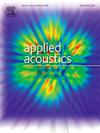一种新的水声信号识别方法:倒谱特征与多路径并行联合神经网络融合
IF 3.4
2区 物理与天体物理
Q1 ACOUSTICS
引用次数: 0
摘要
随着水下目标隐身技术的发展,低信噪比下的特征提取面临着巨大的挑战。针对水声信号的特征提取问题,提出了一种融合自适应预处理、新型倒谱特征融合和多路径并行联合神经网络的水声信号识别框架。针对多变量变分模态分解(MVMD)中分解层次选择不自适应的问题,提出了一种基于模态能量比分析的自适应MVMD算法。该方法通过量化内禀模态函数(IMFs)上的能量分布来动态优化分解参数。在特征提取阶段,将Mel倒频系数提取过程中的三角滤波器组替换为高斯滤波器组。提出了带mel域变换滤波器(TMFCC)的MFCC。在特征识别方面,设计了一个多路径并行CNN-Transformer网络(MPCT-Net)。该架构通过并行处理分支,将CNN的局部特征学习能力与Transformer的全局依赖建模相结合。MPCT-Net在保持计算效率的同时,在多个尺度上提取层次特征。在两种被测无人机上分别进行了特征提取方法的特征验证和网络验证实验。结果表明,该方法对船舶辐射噪声和海洋环境噪声的识别率分别为98.75%和97.75%,均优于验证模型。所提出的特征提取方法为低信噪比下无人机的特征提取提供了新的思路和方法。本文章由计算机程序翻译,如有差异,请以英文原文为准。

A new underwater acoustic signal recognition method: Fusion of cepstral feature and multi-path parallel joint neural network
With the development of underwater target stealth technology, feature extraction under low signal-to-noise ratio faces huge challenge. Aiming at feature extraction of underwater acoustic signal (UAS), An innovative UAS recognition framework integrating adaptive preprocessing, novel cepstral feature fusion, and a multi-path parallel joint neural network is proposed in this paper. To address the non-adaptive decomposition level selection issue in multivariate variational mode decomposition (MVMD), an adaptive MVMD algorithm is developed based on mode energy ratio analysis. This approach dynamically optimizes the decomposition parameter by quantifying energy distribution across intrinsic mode functions (IMFs). In feature extraction stage, triangular filter bank is replaced by Gaussian filter bank in Mel frequency cepstral coefficient (MFCC) extraction process., and MFCC with Mel-domain transformation filter (TMFCC) is proposed. For feature recognition, a multi-path parallel CNN-Transformer network (MPCT-Net) is designed. This architecture integrates the local feature learning capability of CNN with the global dependency modeling of Transformer through parallel processing branches. MPCT-Net extracts hierarchical features across multiple scales while maintaining computational efficiency. Feature verification and network verification experiments are carried out respectively on the proposed feature extraction method in two kinds of measured UAS. The results show that the recognition rates of ship-radiated noise and marine environmental noise are 98.75% and 97.75% respectively, which are all better than those of verification models. The proposed feature extraction method provides new idea and method for feature extraction of UAS under low signal-to-noise ratio.
求助全文
通过发布文献求助,成功后即可免费获取论文全文。
去求助
来源期刊

Applied Acoustics
物理-声学
CiteScore
7.40
自引率
11.80%
发文量
618
审稿时长
7.5 months
期刊介绍:
Since its launch in 1968, Applied Acoustics has been publishing high quality research papers providing state-of-the-art coverage of research findings for engineers and scientists involved in applications of acoustics in the widest sense.
Applied Acoustics looks not only at recent developments in the understanding of acoustics but also at ways of exploiting that understanding. The Journal aims to encourage the exchange of practical experience through publication and in so doing creates a fund of technological information that can be used for solving related problems. The presentation of information in graphical or tabular form is especially encouraged. If a report of a mathematical development is a necessary part of a paper it is important to ensure that it is there only as an integral part of a practical solution to a problem and is supported by data. Applied Acoustics encourages the exchange of practical experience in the following ways: • Complete Papers • Short Technical Notes • Review Articles; and thereby provides a wealth of technological information that can be used to solve related problems.
Manuscripts that address all fields of applications of acoustics ranging from medicine and NDT to the environment and buildings are welcome.
 求助内容:
求助内容: 应助结果提醒方式:
应助结果提醒方式:


